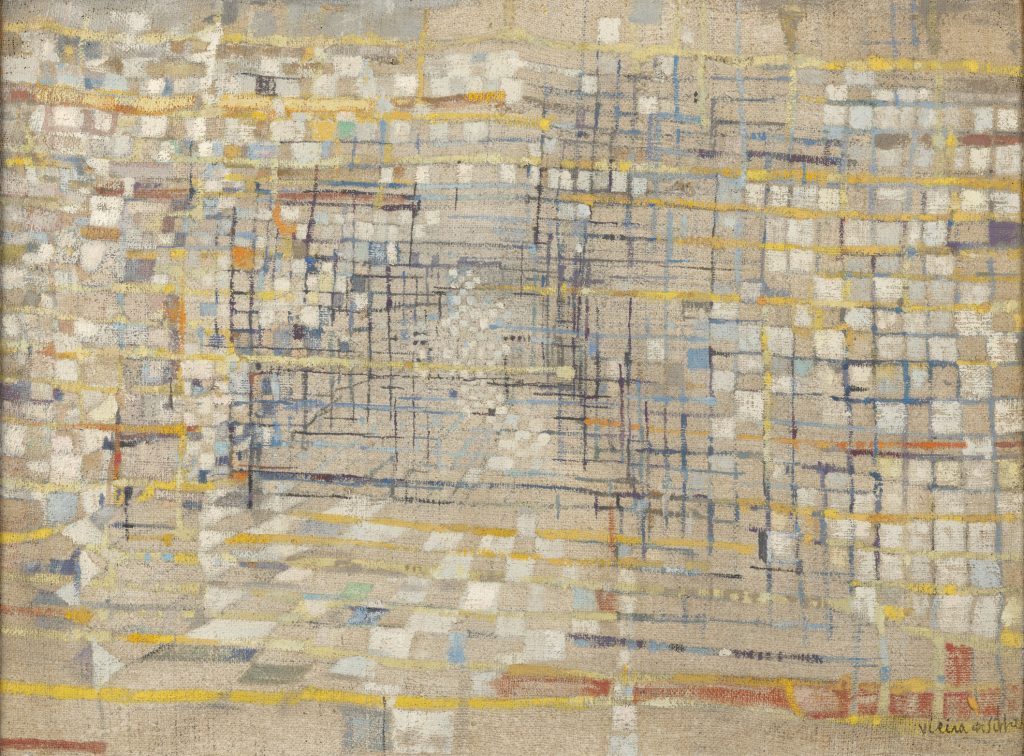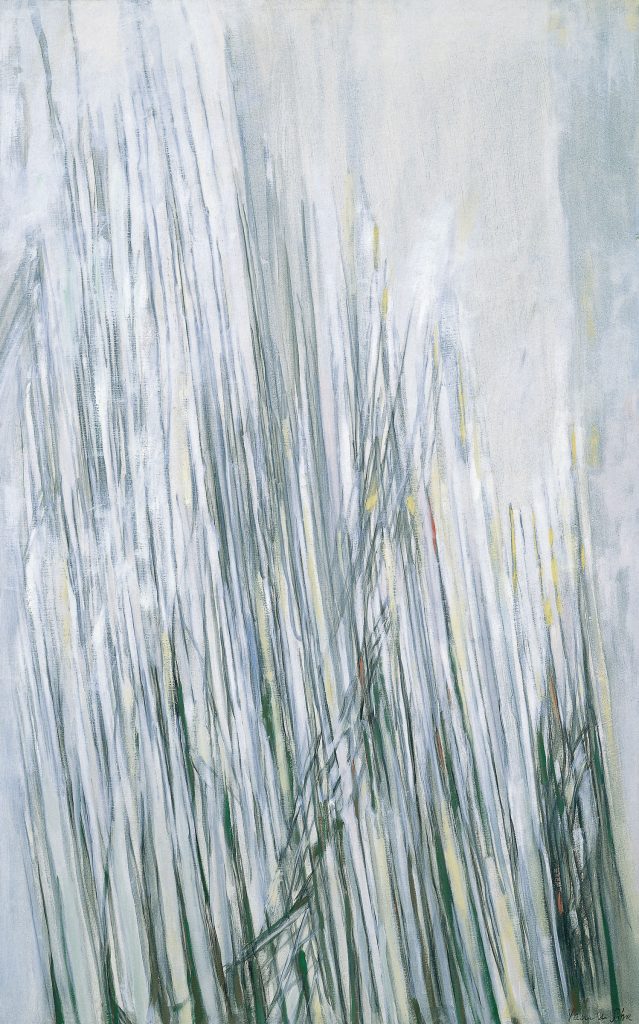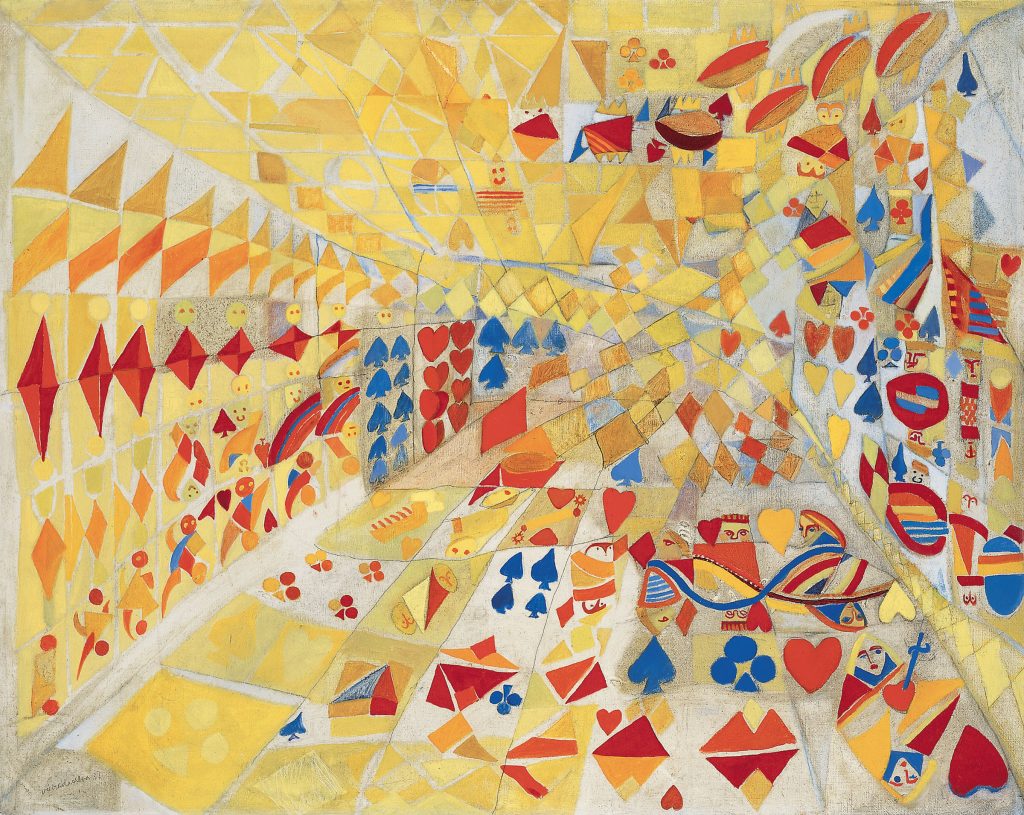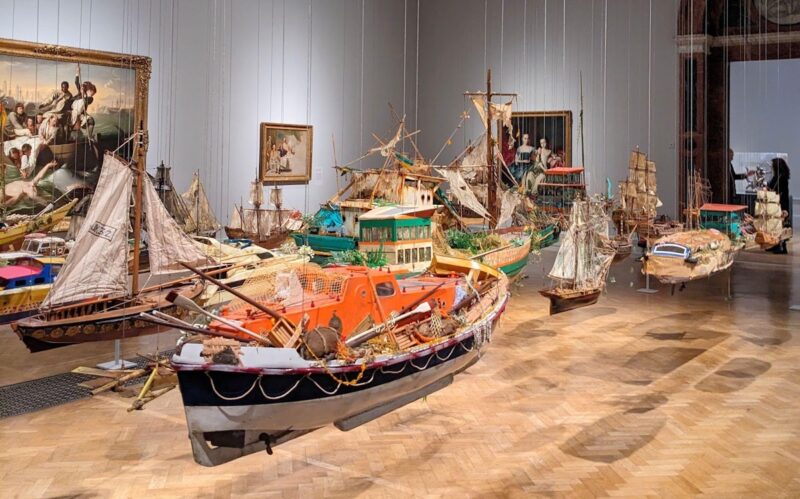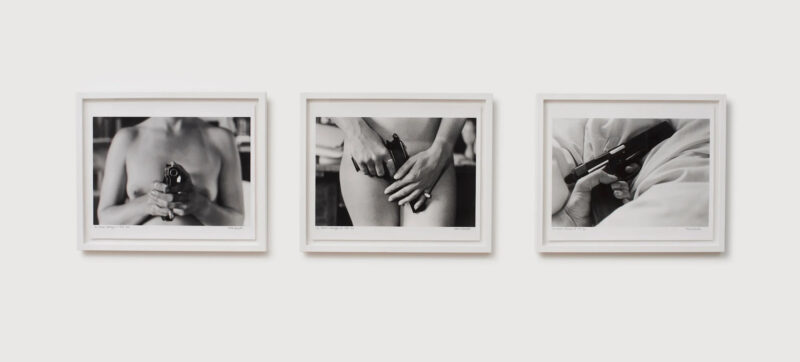
Maria Helena Vieira da Silva Ballet or the Harlequins, 1946
We’ve all heard of Post-Impressionism and Post-Modernism, but what about Post-Cubism? The Portuguese-born painter Maria Helena Vieira da Silva (1908-92) is a leading candidate for the label, as she took the multiple viewpoint in a persuasive new direction from the late 1930’s onward. Vieira da Silva lived most of her adult life in Paris, but her paintings are often inspired by the cityscapes and characteristic patterning of tiles found in the Lisbon of her youth. She has been shown little in the UK, so Waddington Custot’s substantial survey is well worth catching (to 15 Feb*). Lyrical geometric abstraction melds with evocations of architectural interiors and game-playing in her intricate work. The cubist aspect stems from a shifting perspective which complicates the viewer’s orientation in the space of the painting, and suggests an analogy with how perception and memory function differently between individuals. Consequently, her paintings seem to be structured not so much by grids, as by nets thrown over multiple abstractions from reality. Viera de Silva spoke of trying to see the machinery that organises people, and in line with that, habitation is, for the most part, implied rather than visible. Viera de Silva spoke of trying to see the machinery that organises people, and in line with that, habitation is, for the most part, implied rather than visible.
‘Sans titre (ou Couloir)’, 1952, is fairly typical, while ‘Vers la lumiere’, 1991, shows her closing in on pure abstraction.
When people do appear it’s in the form of playing cards (as in the early ‘Le jeu de cartes’, 1937) or as figures merging with the architecture (see ‘Ballet ou les arlequins’, 1946, top).
* actually a commercial touring show, which is unusual: 20 September – 16 November 2019 at Jeanne Bucher Jaeger, Paris, 30 November 2019 – 15 February 2020 at Waddington Custot, London, and 26 March – 29 May 2020 at Di Donna Galleries, New York
Art writer and curator Paul Carey-Kent sees a lot of shows: we asked him to jot down whatever came into his head
